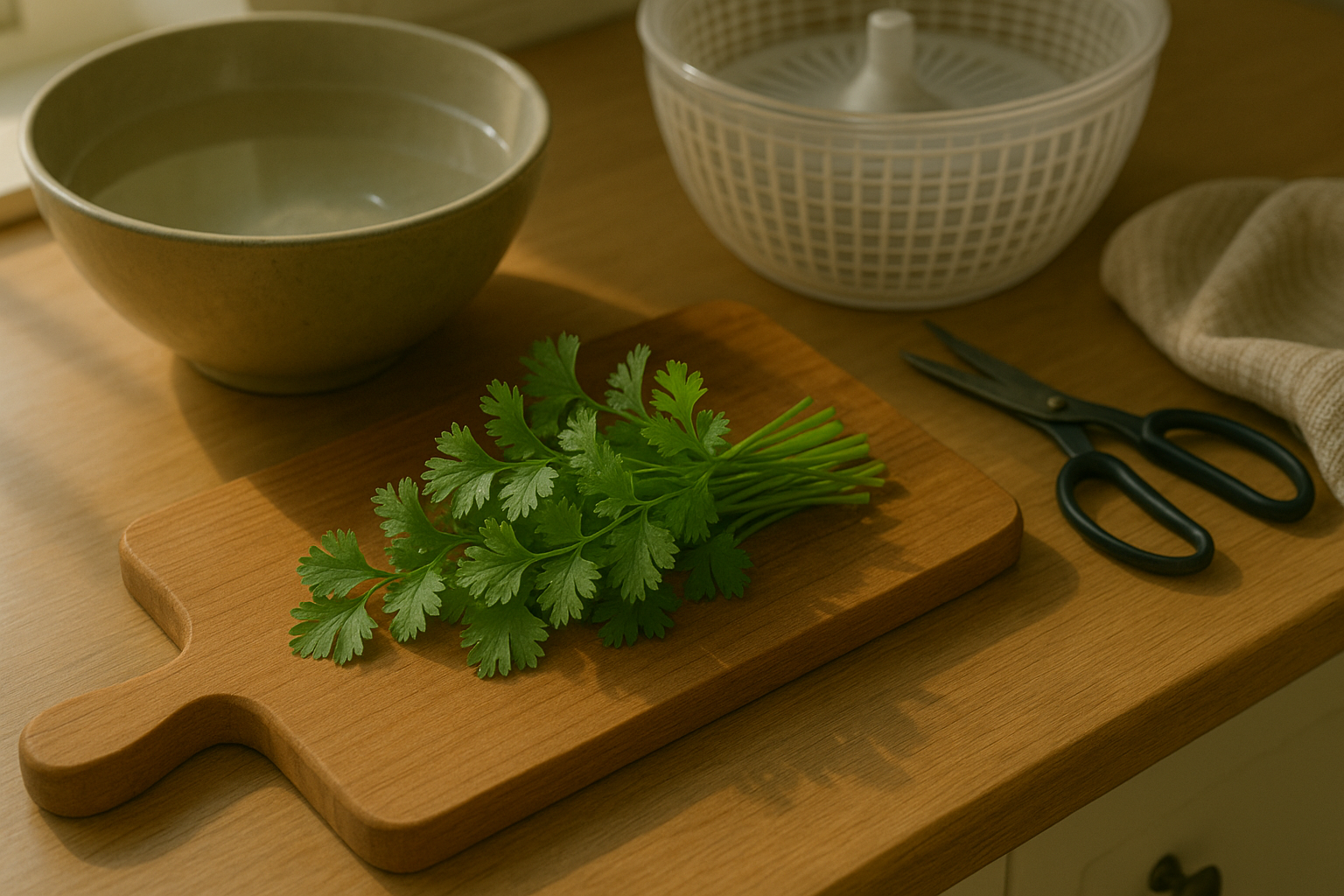Introduction
Drying cilantro at home is an easy way to ensure you always have this beloved herb on hand and avoid the frustration of wilted bunches in your fridge. Fresh cilantro is notoriously delicate—it quickly goes limp, turns yellow, and develops slimy stems. By learning how to dry cilantro for storage, you not only prevent food waste but also preserve its fresh flavor for months, making it simple to add zest to your favorite dishes even in the off-season.
Home-dried cilantro can be surprisingly more aromatic than many store-bought containers, and you get to decide how much or how little to keep on hand. In this article, we’ll guide you through choosing the best cilantro, the step-by-step process for drying it at home, smart storage tips, and practical ways to use dried cilantro so you get the most out of every sprig.
Choosing and Harvesting Cilantro for Drying
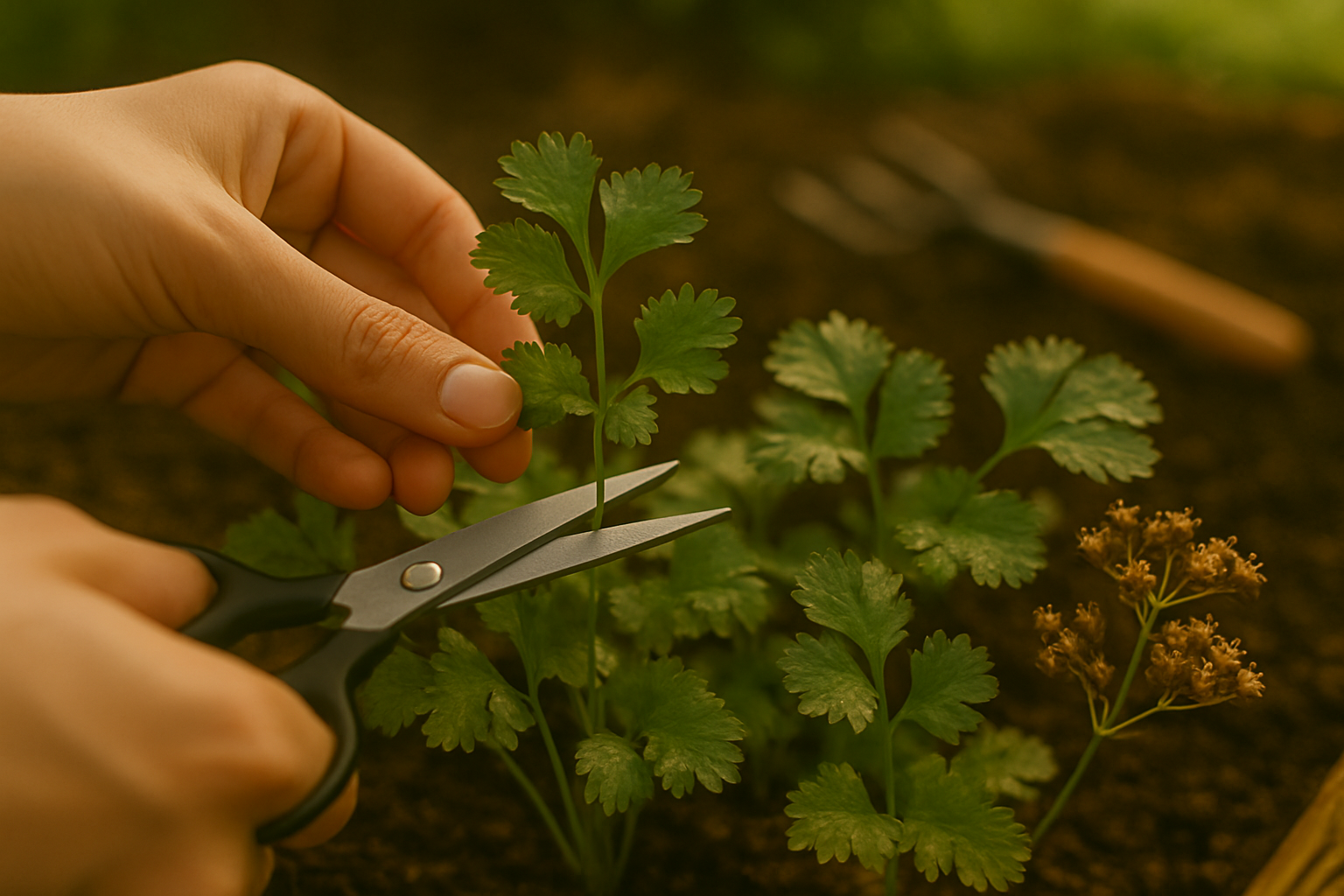
When it comes to drying cilantro, starting with fresh, high-quality herbs makes all the difference in achieving bold, aromatic results. Look for cilantro with vibrant green leaves, crisp stems, and a fresh, herbal scent. Avoid bunches that have yellowing, wilting, or slimy leaves, as these indicate age or spoilage.
Texture matters too: the leaves should feel tender yet firm, without any signs of limpness or decay. If you’re growing cilantro at home, harvest in the morning just after the dew has dried but before the sun gets too hot. This is when the plant’s essential oils—and thus its flavor—are at their peak.
Snip off the outermost leaves, being careful not to damage the central cluster to encourage regrowth. Choosing the freshest cilantro is crucial because drying intensifies both flavors and imperfections; any old, wilted, or damaged leaves will result in a dull, lackluster dried herb. By starting with the best possible bunch, you’ll ensure your dried cilantro retains a rich green color, strong aroma, and maximum flavor for all your favorite dishes.
Prepping Cilantro Before Drying
Before drying cilantro, it’s important to prep it carefully to maintain its flavor and prevent mold. Start by gathering your tools: a large bowl, a colander, sharp kitchen scissors or a knife, a salad spinner or a clean kitchen towel, and a clean, flat surface like a cutting board.
First, fill the bowl with cool water and dunk your cilantro bunch, swishing it gently to loosen any dirt. Rinse it under cold running water, then inspect the leaves for any yellowed, wilted, or slimy spots—remove these with your hands or scissors.
Next, place the cilantro in a colander and shake off the excess moisture. For faster drying, use a salad spinner or gently pat the herbs dry with a kitchen towel, spreading them out so air can circulate around each stem. This step is crucial because any leftover moisture can cause spoilage during drying.
When deciding whether to chop or leave the leaves whole, think about how you’ll use the cilantro later. Keeping the leaves and stems whole preserves more flavor and prevents them from slipping through drying racks. You can always crumble them when needed. However, if you prefer small pieces for easy seasoning, a rough chop before drying works well—just use a sharp knife and avoid mincing, as smaller pieces dry too quickly and may lose potency.
Drying Methods
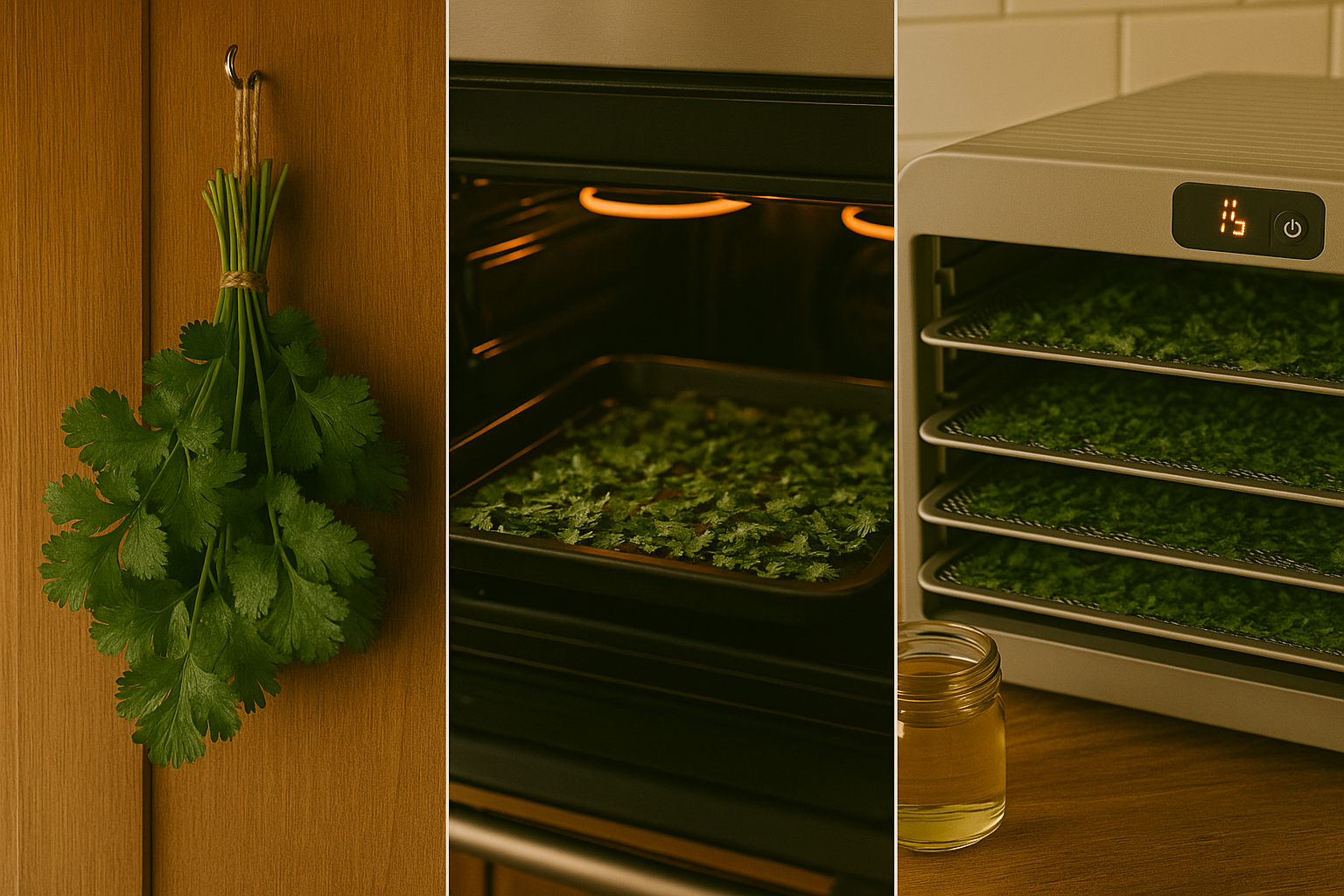
Drying cilantro at home is simple, and you can choose from three main methods: air drying, oven drying, and using a food dehydrator.
Air drying is the most traditional and cost-effective approach—just tie small bunches of washed, thoroughly dried cilantro stems with string and hang them upside down in a warm, well-ventilated spot out of direct sunlight. This method can take one to two weeks, but it’s excellent for retaining the herb’s flavor. However, you’ll need to watch for mold; make sure the bundles aren’t too thick and check regularly for any musty smell or black spots.
Oven drying offers a much faster alternative: spread clean, dry cilantro leaves in a single layer on a baking tray and heat them in the oven at its lowest setting (around 170°F or 75°C) for about 20–30 minutes, checking every 10 minutes to prevent burning. Stir the leaves occasionally to promote even drying. This method is fast but can slightly diminish the herb’s flavor.
For the best balance of speed and taste, a dehydrator is your friend: arrange the washed cilantro leaves in a single layer on the dehydrator trays, set the temperature to around 95°F (35°C), and dry for 1–4 hours until crisp. Dehydrators are easy to use and offer consistent results, though they do require an upfront investment. If you notice uneven drying—common with thicker stems—try removing the stems and drying just the leaves.
For all methods, once dry, the cilantro should crumble easily; store it immediately in an airtight container away from direct light. With these techniques, you’ll have flavorful dried cilantro on hand for months!
How to Store Dried Cilantro Properly
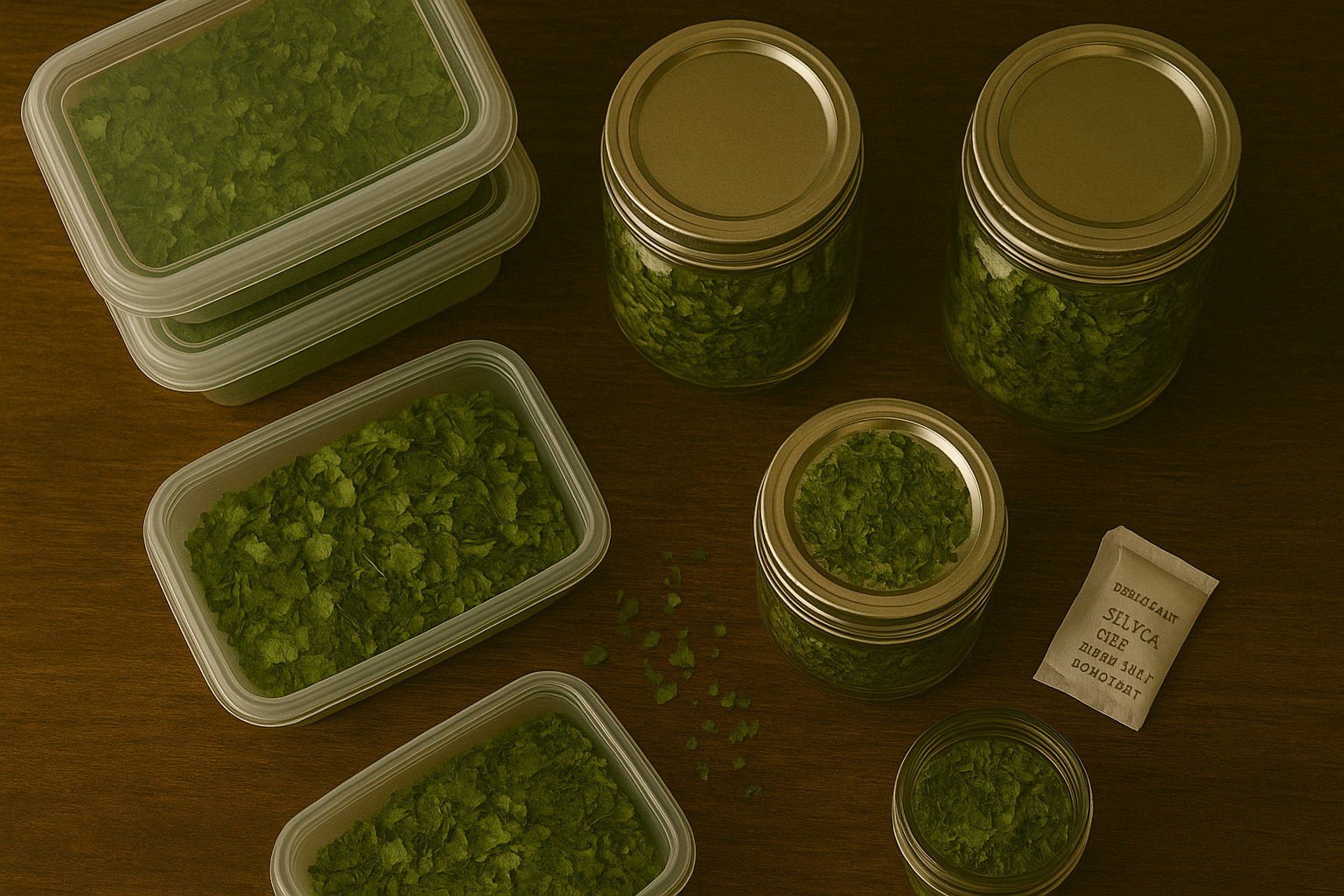
Properly storing dried cilantro ensures it stays flavorful for months. First, make sure your cilantro is completely dry before packing—test by rubbing a leaf between your fingers; it should crumble easily and feel papery, with no hint of softness or flexibility.
For storage, choose airtight containers like mason jars, vacuum-sealed bags, or tightly sealed plastic containers, as these keep out both air and moisture. Store these containers in a cool, dark, and dry place—your pantry or a kitchen cabinet away from the stove is ideal. Exposure to heat, light, or humidity can quickly dull cilantro’s potent taste and aroma.
Consider labeling your container with the date, so you always remember when you stored the batch. For best results, avoid opening the jar too often, which lets air and moisture in; only scoop out what you need with a clean, dry spoon. If you’re using clear glass containers, keep them in a drawer or box to shield them from light.
Lastly, adding a food-safe desiccant packet can help absorb any stray moisture, preserving the cilantro’s flavor for even longer. Taking these simple steps will help keep your dried cilantro tasting fresh and vibrant for all your favorite recipes.
Ways to Use Dried Cilantro in Cooking
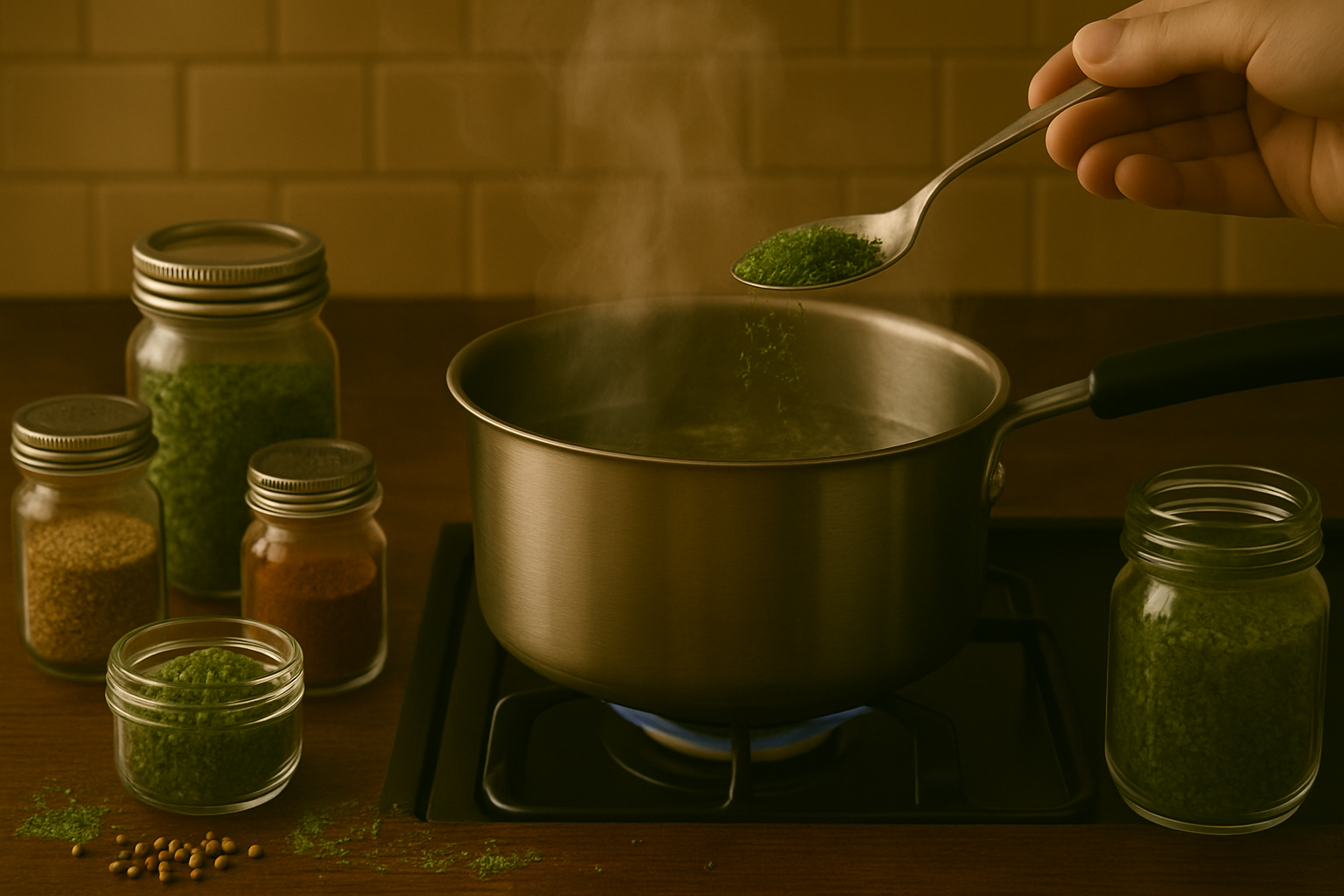
Dried cilantro is perfect for dishes where it can infuse its herbal notes during cooking, making it a smart pantry staple when fresh isn’t available. It works best in soups, stews, curries, rice dishes, or marinades—think slow-cooked chili, flavorful biryanis, or tomato-based sauces where the heat helps draw out its essence.
Unlike fresh cilantro, which offers a bright, tangy finish and vibrant color, dried cilantro has a subtler, mellow flavor that complements rather than dominates a dish. To substitute dried for fresh cilantro, use a ratio of one part dried to three parts fresh—so if a recipe calls for 3 tablespoons of fresh cilantro, use just 1 tablespoon of dried. Crush the dried leaves between your fingers before adding to help release more aroma.
Keep in mind, dried cilantro is best added earlier in the cooking process to let its flavor bloom; adding it as a garnish won’t have the same effect as fresh. For example, when making tacos or salsas, dried cilantro can work in the seasoning mix, but if you want that fresh, zesty pop on top, nothing truly beats fresh sprigs.
Store dried cilantro in an airtight container away from heat and light to preserve its potency.
Frequently Asked Questions About Drying Cilantro
If you’re wondering whether freezing cilantro is a good alternative to drying, the answer is yes—many home cooks prefer freezing because it preserves more of the herb’s vibrant, fresh flavor. To freeze cilantro, chop the leaves and either store them in a freezer-safe bag or mix them with a bit of water or oil and freeze in ice cube trays for easy use in soups and sauces.
Dried cilantro, by comparison, lasts significantly longer—typically up to one to three years when stored in a cool, airtight container. However, drying does change cilantro’s flavor: the fresh, pungent notes mellow out, leaving a more subdued, slightly earthy taste.
Expert Tips for Maximizing Flavor Retention
- Air dry or use a low-heat dehydrator to prevent scorching the delicate leaves.
- Always store your dried cilantro away from sunlight, heat, and moisture.
- Add dried cilantro towards the end of cooking to help preserve its flavor, giving your dishes a subtle herbal lift without the bitterness that sometimes comes from overcooked herbs.
Conclusion and Quick Reference Tips
Drying and storing cilantro is an easy way to keep this flavorful herb on hand year-round, saving you both time and money. By washing, thoroughly drying, and selecting your preferred method—whether air drying, oven drying, or using a dehydrator—you can preserve cilantro’s fresh flavor with ease.
Once dried, store the leaves in an airtight container in a cool, dark place. Don’t forget to label your container with the date.
Quick checklist:
- Wash
- Dry thoroughly
- Remove stems
- Choose drying method
- Check for crispness
- Store properly
With these simple steps, you’ll always have cilantro ready to enhance your favorite dishes.
